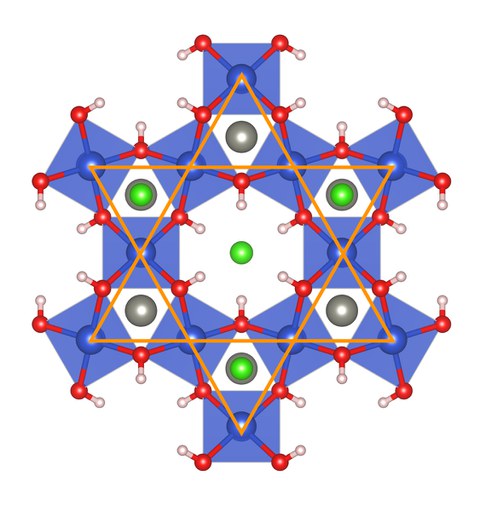Oct 05, 2020
Quantum honey from black holes

Image of the lattice structure of the mineral Herbertsmithite
Researchers from the Cluster of Excellence Complexity and Topology in Quantum Matter (ct.qmat) proposed a new quantum material in which electrons move like a viscous fluid – a kind of quantum honey. These particles behave that way because they have much stronger bonds than previously known. The effect will be three times stronger than the ‘miracle material’ graphene, provided it can be produced in sufficient purity. Due to its low resistance, this electron fluid might open up new perspectives for microelectronics and storage media. In addition, magnetic fields can be activated and deactivated precisely due to vortex formation in this fluid. These results were published in the scientific journal Nature Communications.
This insight had not been possible until the scientists combined the previously separate theories of quantum gravity and solid state physics. To do this, the physicists equated the temperature of black holes (Hawking temperature) with the temperature of electrons in the quantum material. This enabled a specific prediction of a quantum material in which these effects may be amplified: “Scandium-Herbertsmithite” (Sc-Hb) with trivalent scandium atoms instead of bivalent zinc.
